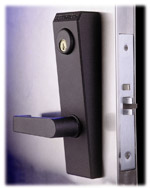Is 1080p Resolution Still the Standard? by DW
Some people think that there are two guiding principles to video surveillance, but there are three:
Resolution, frame rate and bandwidth.
Video surveillance cameras with very high resolution sensors are not new anymore. But making them usable is what continues to be developed — fast frame rates producing reasonable amounts of bandwidth for streaming and storage.
For example, it is easy to fall in love with the image quality and digital zoom features of a 10 megapixel video surveillance camera. However, when you experience the slow frame rate and have to manage the bandwidth, the love affair can wane.
Now, I do not want to overstate frame rate, and I once again point you to this video that we made to help you to easily compare frame rates.
Some applications require a fast frame rate. Some vertical markets, like the gaming industry, require real-time 30-frames-per-second (fps) by law.
I think we can point to the gaming industry for elevating the conversation of frame rate in IP video surveillance. The casinos did not leave analog until IP could deliver the frame rate. Then, when IP manufacturers began touting HD video (1080p), it became critical to deliver HD video at 30fps, with manageable bandwidth requirements.
Fortunately, when the television industry embraced H.264 compression, it really did change the world. It opened the floodgates for the way we consume video today. H.264 uses an algorithm that predicts the next image frame in order to take advantage of repeated visual information. This compression delivers real-time HD video and reduces bandwidth requirements compared to compression standards that preceded it.
H.264 also gave IP video surveillance manufacturers the leverage they were looking for vs. analog video surveillance. 1080p image resolution is a huge leap forward over VGA and even 720p resolution. Suddenly, customers were getting IP video surveillance comparable in quality to what they enjoyed each night on their flat screen TVs.
For some time now, 1080p resolution has been the standard (or lowest acceptable resolution) in an IP video surveillance system. As HD Analog has been developed, analog cameras and recorders that can produce and record 1080p video is the starting point. The definition of HD is still 1080p. (What do HD Analog manufacturers use to stream and record that amount of video information? H.264 compression.)
And then came 4K IP sensors that deliver more than 8 megapixels of resolution at 30fps. Magic. But as efficient as the sensors are, there is plenty of bandwidth and CPU load that goes with that video. I am not going to suggest that bandwidth and processor load are the reasons for slow adoption of 4K video surveillance cameras. By 2017 IP infrastructure standards, there are many 4K cameras with reasonable bandwidth, and CPU load is something you always have to calculate and plan for accordingly. No, I think that cost continues to be a factor. When it becomes affordable to replace all your 1080p cameras with 4K cameras — that will be something.
I will stop salivating over 4K long enough to make what I think is a critical point. We keep hammering the philosophy that you need to compare the cost of a video surveillance system, not just the cost of individual cameras.
And when you plan a video surveillance system, it probably would not make sense to put 4K cameras everywhere.
So it follows, if higher resolution cameras between 1080p and 4K with fast frame rates and manageable bandwidths are available, then you probably want to plan them into your system as alternatives to multiple 1080p cameras.
This walk down memory lane ends here. Here’s the message.
Digital Watchdog® has introduced MEGApix® 4 megapixel and 5 megapixel cameras that can produce full resolution at 30fps with manageable bandwidths. Praise be to the sensor chip manufacturers. Long may they push the envelope!
As you are planning a new IP video surveillance system, please consider the advantages of more resolution to reveal details and cover wider areas, available with bandwidths that your network and storage can handle.



Recent Comments